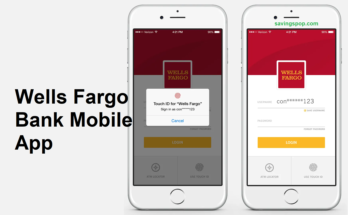In a more and more virtual global, teaching teens approximately monetary duty is more essential than ever. Opening a financial institution account for a teenager offers a unique possibility to instill cash control competencies as a way to gain them for a lifetime. This complete manual will stroll you through the whole lot you want on how to open bank account for teenager, from know-how the blessings to the step-by-step technique, and the way to ensure an advantageous revel for both the teen and the figure.
How to Open Bank Account for Teenager
What is a Teen Bank Account?
A teenage financial institution account is designed in particular for people generally elderly 13 to 17. These bills offer a variety of capabilities tailor-made to help young humans find out about coping with money. Unlike standard grownup debts, youngster bills regularly include functions like parental oversight and academic gear.
Key Features:
- Parental Oversight: Most teen accounts require a parent or guardian to co-sign, allowing for parental supervision and guidance.
- Limited Access: To promote responsible use, these accounts often have restrictions on transactions and features.
- Educational Resources: Banks frequently provide tools and resources to help teens learn about budgeting, saving, and financial planning.
Key Differences from Adult Accounts
- Age Restrictions: Teen money owed is designed for younger users and comes with age-appropriate functions.
- Parental Involvement: Teens generally need a co-signature from a figure or father or mother.
- Account Features: Some features, like overdraft safety, can be constrained or now not available.
Benefits of Opening a Bank Account for Teenagers
Financial Literacy
Opening a financial institution account teaches teenagers essential financial principles which include deposits, withdrawals, and managing a balance. It facilitates them in apprehending how money works in a real-global context, laying the basis for destiny’s financial selections.
Benefits:
- Hands-On Learning: Teens get practical experience with money management.
- Understanding Banking Terms: Familiarize them with terms like interest rates, fees, and account balances.
Saving Habits
A bank account encourages young adults to store money regularly. Whether it’s for a new machine or a future rate, having a financial savings account instills the addiction of putting apart cash and making plans for destiny wishes.
Benefits:
- Goal Setting: Teaches teens to set and work towards savings goals.
- Compound Interest: Introduces the concept of earning interest on savings.
Building Credit
Although teens can’t build a credit history solely through a bank account, learning to manage money responsibly is a crucial step toward a positive credit history. When they eventually apply for credit cards or loans, their early financial habits will be beneficial.
Benefits:
- Early Foundation: Helps build a foundation for future creditworthiness.
- Responsible Usage: Encourages responsible financial behavior that impacts credit scores.
Independence
Managing a bank account offers teenagers a feeling of economic independence. They discover ways to make their personal choices about spending, saving, and budgeting, which fosters maturity and responsibility.
Benefits:
- Self-Reliance: Encourages independence in managing personal finances.
- Decision-Making Skills: Teaches the consequences of financial decisions.
Eligibility Requirements
Age Requirements
Teen bank accounts are usually to be had for individuals elderly 13 to 17. However, the precise age variety can range between banks, so it’s vital to test with the specific institution.
Typical Age Ranges:
- 13-15 Years: Most banks allow teens in this age group to open a savings account with parental consent.
- 16-17 Years: Teens in this age range often have access to checking accounts in addition to savings accounts.
Parental Consent
Most banks require a figure or parent to co-signal the account commencing documents. This guarantees that the account is managed responsibly and affords an extra layer of oversight.
Parental Role:
- Co-Account Holder: Parents are usually listed as co-account holders, allowing them to monitor transactions and provide guidance.
- Supervision: Ensures that the account is used appropriately and helps with any issues that may arise.
Documentation
To open a bank account, you will need to provide several documents. The requirements may vary slightly depending on the bank.
Essential Documents:
- Identification: A government-issued ID for the teenager, consisting of a driving force’s license or passport.
- Social Security Number: Required for identification verification and tax purposes.
- Proof of Address: A current software invoice or comparable report to verify the current deal.
- Parental Identification: The parent or guardian’s ID for verification.
Bank-Specific Requirements
Different banks may additionally have extra necessities, such as the least deposit amount or particular forms. It’s essential to study these necessities before starting the manner.
Additional Considerations:
- Minimum Deposit: Some banks require an initial deposit to open the account.
- Application Forms: Banks may have specific forms or agreements for teen accounts.
Types of Bank Accounts for Teenagers
Checking Accounts
A checking account is appropriate for daily transactions consisting of deposits, withdrawals, and purchases. It regularly comes with a debit card and online banking get admission to.
Features:
- Debit Card: Allows for easy access to funds and online purchases.
- Online Banking: Provides digital access to manage the account.
- Check Writing: Some accounts allow writing checks (if permitted).
Benefits:
- Daily Use: Ideal for regular transactions and managing spending.
- Financial Management: Teaches teens to track spending and maintain a budget.
Limitations:
- Fees: These may include monthly maintenance fees or minimum balance requirements.
- Overdrafts: Teens may have limited or no overdraft protection.
Savings Accounts
A savings account is designed to help teens save money over time. It typically offers interest on the deposited amount, helping the savings grow.
Features:
- Interest Earnings: Provides interest on the balance, encouraging saving.
- Limited Transactions: Usually restricts the number of withdrawals per month.
Benefits:
- Encourages Saving: Promotes saving for future needs or goals.
- Interest Growth: Helps teens understand how money can grow over time.
Limitations:
- Access Restrictions: Limited access to funds compared to checking accounts.
- Minimum Deposit: Some accounts require a minimum deposit to open.
Joint Accounts
A joint account involves both the teen and a parent or guardian. Both parties have access to the account and share responsibility for managing it.
Features:
- Shared Access: Both the teen and parent can manage the account.
- Parental Guidance: Provides a way for parents to oversee and guide financial activities.
Benefits:
- Learning Experience: Allows teens to learn financial management with adult supervision.
- Ease of Monitoring: Simplifies monitoring and managing account activity.
Limitations:
- Shared Responsibility: Both account holders are responsible for account management.
- Privacy: Limited privacy for the teen as the parent has access to all transactions.
Steps to Open a Teen Bank Account
1. Research Banks
Start by getting to know banks that provide accounts for teens. Look for banks with favorable features which include low fees, academic sources, and appropriate customer service.
Considerations:
- Bank Reputation: Choose a bank with a good reputation for customer service.
- Account Features: Compare the features of teen accounts offered by different banks.
2. Compare Features
Different banks offer varying features for teen accounts. Compare aspects such as interest rates, fees, and account accessibility.
Key Features to Compare:
- Interest Rates: For savings accounts, higher interest rates can lead to better returns.
- Fees: Look for accounts that have low or no fees.
- Accessibility: Consider online and mobile banking options for easy account management.
3. Prepare Documentation
Gather all necessary documents before applying for the account. Ensure you have the required identification, proof of address, and other paperwork.
Document Checklist:
- Teen’s Identification: Driver’s license, passport, or school ID.
- Parent’s Identification: Government-issued ID for verification.
- Proof of Address: Recent utility bill or similar document.
4. Visit the Bank
You can open an account either in person at a bank branch or online. Visiting the bank in person can provide additional guidance and assistance from bank representatives.
In-Person vs. Online:
- In-Person: Allows for direct interaction with bank staff and immediate assistance.
- Online: Convenient and quick, but may require additional verification steps.
5. Complete Application
Complete the application forms with the relevant information. Ensure that both the teen and the parent or guardian sign where necessary.
Application Process:
- Personal Information: Provide details for both the teen and the parent.
- Signatures: Both the teen and parent must sign the application.
- Account Setup: Finalize the setup by agreeing to the account terms and conditions.
6. Deposit Funds
Some banks need an initial deposit to open an account. Ensure you meet this requirement to activate the account.
Initial Deposit:
- Amount: Check the minimum deposit requirement for the account.
- Source: The deposit can typically be made by cash, check, or transfer from another account.
Teaching Financial Responsibility
Budgeting
Teach your teen the basics of budgeting to help them manage their money effectively. A simple budget includes tracking income, expenses, and savings.
Budgeting Tips:
- Track Income: Record all sources of income, such as allowances or part-time job earnings.
- List Expenses: Identify and categorize regular expenses.
- Adjust Spending: Ensure that spending does not exceed income.
Saving
Encourage your teen to set savings goals and regularly contribute to their savings account. This practice helps them understand the importance of saving for future needs.
Saving Tips:
- Set Goals: Define short-term and long-term savings goals.
- Automate Savings: Consider setting up automatic transfers to the savings account.
- Monitor Progress: Regularly review savings progress and adjust goals as needed.
Investing
Introduce basic investment concepts to your teen, such as stocks, bonds, and mutual funds. While they may not start investing immediately, understanding these concepts can be valuable in the future.
Investment Basics:
- Stocks: Shares in a company that may provide dividends and potential for growth.
- Bonds: Loans to governments or corporations that pay interest.
- Mutual Funds: Investment vehicles that pool money from many investors to buy a diversified portfolio.
Credit and Debt
Discuss the fundamentals of credit and debt management, together with the significance of retaining an excellent credit rating and averting excessive debt. Although young adults won’t use credit playing cards without delay, knowing those concepts is important.
Credit Tips:
- Understand Credit Scores: Explain how credit scores impact borrowing and interest rates.
- Avoid Debt: Teach the importance of avoiding unnecessary debt and paying off any borrowed money.
Common Challenges and Solutions
Overdrafts and Fees
Teens may face challenges like overdrafts or account fees. Help them understand how to avoid these issues by monitoring their account regularly and managing their spending.
Solutions:
- Monitor Balances: Regularly check account balances to avoid overdrafts.
- Understand Fees: Learn about any fees associated with the account and how to avoid them.
Fraud and Security
Financial security is crucial. Teach your teen about online security and how to protect their account information from fraud.
Security Tips:
- Strong Passwords: Use strong and unique passwords for online banking.
- Monitor Transactions: Regularly review account transactions for any suspicious activity.
- Report Issues: Contact the bank immediately if any suspicious activity is noticed.
Limited Access to Funds
Teens may have limited access to funds due to account restrictions. Ensure they understand these limitations and how to manage their finances within these boundaries.
Access Tips:
- Understand Restrictions: Familiarize yourself with any limitations on withdrawals or transactions.
- Plan: Teach teens to plan their spending and savings to work within these limits.
Encouraging Positive Financial Habits
Regular Reviews
Encourage your teen to regularly review their account activity and financial goals. This practice helps them stay on track and make informed decisions.
Review Tips:
- Monthly Statements: Go over monthly account statements together to discuss spending and saving.
- Financial Goals: Reassess and adjust financial goals as needed.
Open Communication
Maintain open verbal exchange approximately money and price range. Discuss economic choices, demanding situations, and successes to foster a healthy know-how of cash control.
Communication Tips:
- Discuss Goals: Talk about financial goals and how to achieve them.
- Address Concerns: Be open to discussing any concerns or questions your teen may have about their account.
Conclusion
Opening a bank account for a teenager is a valuable step in their journey toward financial independence. You can help your teen develop essential money management skills by understanding the benefits, requirements, and process. This guide has covered everything from selecting the right type of account to teaching financial responsibility and overcoming common challenges. Start today to set your teenager on the path to financial success and independence.




